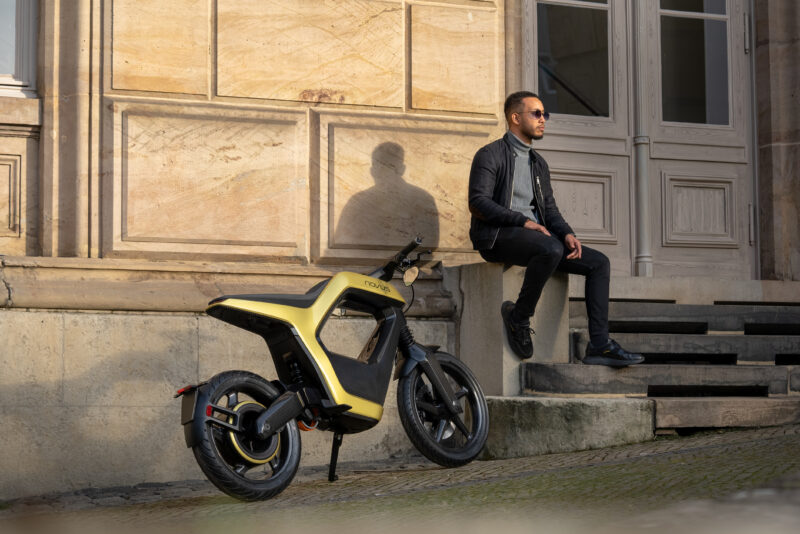Sign up for daily news updates from CleanTechnica on email. Or follow us on Google News!
The advancement of smart grid technologies and renewable energy sources has transformed the automobile and power industries. We know that electric vehicle batteries produce much less carbon than their internal combustion engine vehicle counterparts. Then again, there’s concern about the amount of electricity that EVs consume — and whether that consumption will someday compromise the grid. Could the transition to personal transportation electrification actually boost the energy system by balancing grid flow?
Wind turbines and solar panels are renewable energy sources that produce zero carbon emissions. Because they are dependent on nature, in their rawest sense it can be said that they have an intermittency problem. With that simple definition, it’s easy to argue that the anticipated increase in EVs by 2035 would overtax the grid and fail to meet electricity supply and demand. The lack of an efficient, commonplace storage system can be framed as a hindrance to renewables’ acceptance in a power grid. The Guardian notes that British “net zero-skeptical newspapers” have warned that the shift to EVs would “risk overwhelming the grid and threaten catastrophic blackouts” when intermittent sun and wind fail to provide the necessary power.
However, renewables are more complex than an either/or, give-and-take with nature. New technology applications are revealing all kinds of ways to regulate electricity usage and even fill in gaps of electricity. Because there are so many questions about EVs and the grid, it makes sense to deconstruct the mélange of renewables, electricity, and the potential for EVs to assuage grid flow concerns.
 Chip in a few dollars a month to help support independent cleantech coverage that helps to accelerate the cleantech revolution!
Chip in a few dollars a month to help support independent cleantech coverage that helps to accelerate the cleantech revolution!
Switching to electricity as a vehicle fuel source offers exciting opportunities with numerous economic and environmental benefits but will introduce an array of complex, interdependent challenges and will require increased coordination among stakeholders. Successful EV integration with the electric grid will be essential for reducing emissions, maintaining reliable and resilient electricity, reducing system cost, and enabling a seamless charging experience, according to the US Department of Energy.
Vehicle-Grid Integration (VGI) or Vehicle-to-Grid (V2G) technologies are changing both the transport and electric power sectors. Discussions abound as a result about mitigation of voltage and frequency excursions and the prospect of grid flow stabilization.
Vehicle-Grid Integration
Vehicle-grid integration (VGI) refers to technologies, policies, and strategies for EV charging which alter the time, power level, or location of the charging (or discharging) in a manner that benefits the grid while still meeting drivers’ mobility needs.
- V1G: one-direction, managed charging, aka smart charging
- V2B/ V2H: vehicle used to power a vehicle or home
- V2L: vehicle used to power other loads
- V2G: bidirectional charging/discharging for grid services.
The Vehicle Grid Integration Council (VGIC) is a national 501(c)(6) membership-based advocacy group committed to advancing the role of electric vehicles and smart EV charging through policy development, education, outreach, and research. VGI is based on bidirectional power flow in which the interface between the EV and the grid charges the EV battery with the required capacity and also feeds the power back to the utility. As example, VGI is a key tool for achieving California’s decarbonization and EV adoption goals.
Vehicle-to-Grid Technology
How can EVs assist the aging US electrical grid as it tries to handle the rising demand for electricity during peak load times? It’s a concept still in its infancy and is one that will require the coordination of car makers, technology providers, utilities, and regulators to work together to make bidirectional charging and discharging a common feature of owning and operating EVs.
Vehicle-to-grid technology is a fascinating opportunity. Rather than building power stations, hydroelectric storage, or banks of stationary batteries, the idea goes, the energy stored in EV batteries is used. The EV morphs into a portable power pack, a backup for power cuts in the home, and even a way for EV owners and leasers to make a profit by selling power back to the grid.
The V2G perspective is based on the 5Ds vision to overcome the overall shortcomings in the modern power grid:
- Decentralization
- Decarbonization
- Digitalization
- Deregulation
- Democratization
Although the basic concept of V2G charging sounds simple enough, implementing it requires a complex suite of smart technology. Charging stations must be equipped with software that communicates with the central grid to assess overall system demand at any given time. Considering the huge volume of data transmission, the mobility of EVs, and the need for fast response, V2G communication demands fast authentication and encryption/decryption.
As part of following all power regulations and standards, successful implementation of V2G demands a reliable real-time communication system. A lot of communication is involved between aggregators, control centers, and vehicles, and a control center communicates charging rate, power commands, time, etc. to the aggregator. The aggregator sends charging details, charging station details, charger details, power commands, etc. to the EVs. Furthermore, the aggregator informs the control center about the EVs at the station, station location, charging time details, power level, etc.
V2G is the most prominent and popular V2X technology due to its capacity to supply power to the grid and potentially contributing to the national energy market by promoting the integration of renewables into the utility grid. EVs operating in V2G mode can also assist in frequency and voltage regulation and can be economically beneficial to EV owners in multiple ways. EV owners with small-scale solar or wind units at home can optimize their energy consumption.
Final Thoughts
EVs are not just transportation tools, but also resources of energy. Using V2G technology to balance power load fluctuations is gaining attention from governments and commercial enterprises. EVs with bidirectional chargers can be used to power a home, power another EV, or even feed the utility grid. V2V operation facilitates charge transfer among EVs. This concept allows vehicle owners to share their battery charge with other vehicle owners. For example, during a recent trip to Ogunquit, ME, a Ford F-150 Lightning owner described how, on a rural camping trip, he helped a buddy to power a Tesla so it could get to a charging station about 20 miles away.
Automakers are starting to install the technology required for bidirectional charging. Models from BYD, Hyundai, Renault, Nissan, and SAIC’s MG are capable of bidirectional charging, and more like Tesla are likely to follow. In response to skeptics in the UK, when the number of British EV users hits 10 million, the country may be able to power the whole country at peak time.
A good source for more information on this topic is NREL, which conducts research on the integration of EVs with buildings, the grid, and other energy systems. Its research focuses primarily on developing advanced hardware and control solutions to:
- Accelerate EV integration into the larger utility grid
- Implement a resilient EV charging infrastructure for transportation decarbonization
- Validate EV integration solutions at NREL facilities
- Inform advanced vehicle and charging demonstrations to advance EV adoption at scale
- Identify grid impacts of EV charging and develop new smart control solutions
Have a tip for CleanTechnica? Want to advertise? Want to suggest a guest for our CleanTech Talk podcast? Contact us here.
Latest CleanTechnica.TV Videos
CleanTechnica uses affiliate links. See our policy here.
CleanTechnica’s Comment Policy




